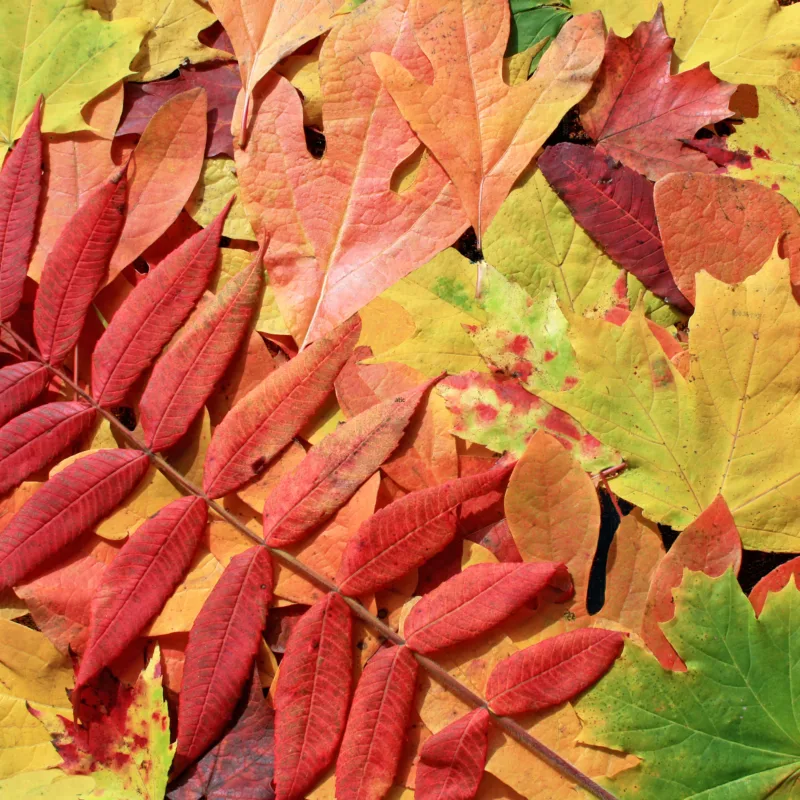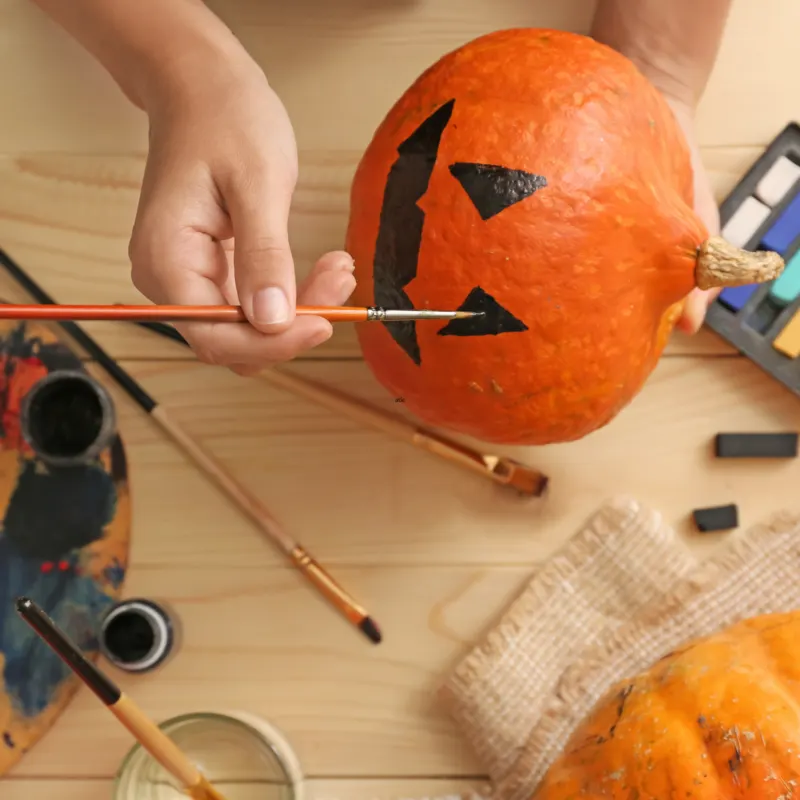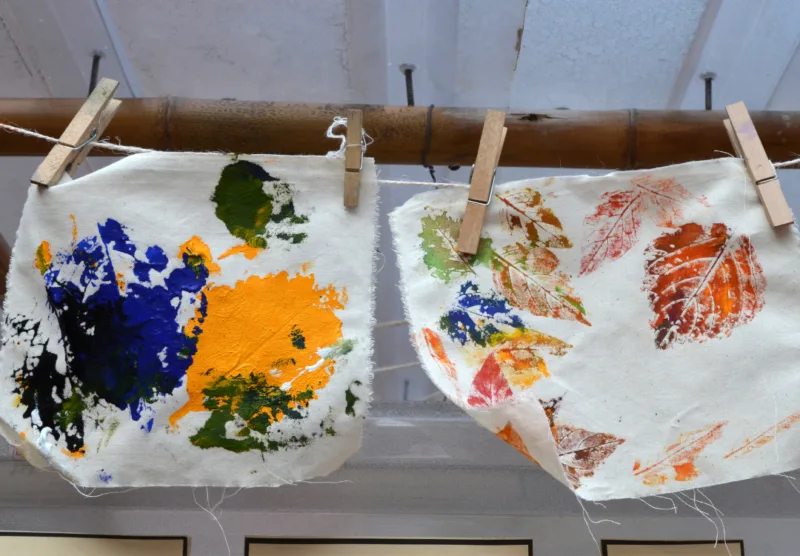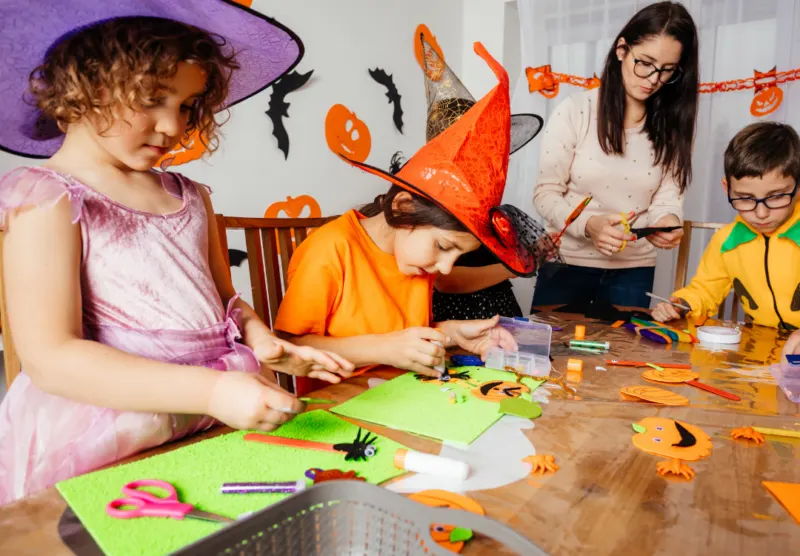Get ready to bring out the creativity in your little ones this fall with these 10 fun and innovative fall preschool art activities. From colorful leaf collages to handprint pumpkins, these projects are sure to inspire the inner artist in your child.
With the changing colors of the leaves and the cool breeze in the air, fall provides the perfect backdrop for artistic exploration. These activities not only provide a great opportunity for your preschooler to express themselves, but also help develop their fine motor skills and cognitive abilities.
Whether your little artist prefers painting, drawing, or working with different textures, there is something here for every creative mind. These hands-on activities are easy to set up and use everyday materials you likely already have at home.
So gather your art supplies, put on your smocks, and dive into these exciting fall art projects with your preschooler. Prepare to be amazed at the beautiful masterpieces your little one will create!

Benefits of Incorporating Art Activities in Preschool Curriculum
Integrating art activities into the preschool curriculum offers numerous benefits that extend beyond simple enjoyment. Engaging in creative expression allows young children to explore their emotions and thoughts in a safe space.
Art serves as a medium through which they can communicate feelings that may be difficult to articulate verbally. As they experiment with colors, shapes, and materials, preschoolers learn to express their individuality and unique perspectives, fostering a sense of autonomy and self-worth.
Moreover, art activities promote cognitive development by encouraging critical thinking and problem-solving skills. As children navigate through different projects, they are faced with choices that require them to think creatively.
For instance, determining how to combine colors for a desired effect or deciding the arrangement of items in a collage challenges them to make decisions and evaluate outcomes. Such exercises lay the groundwork for more complex cognitive functions, ultimately enhancing their academic readiness.
In addition to cognitive growth, art activities are instrumental in developing fine motor skills. Preschoolers engage in tasks that involve cutting, gluing, painting, and drawing, all of which strengthen their hand-eye coordination and dexterity.
These skills are foundational for later tasks like writing, tying shoelaces, and even using utensils. The repetition of these activities not only refines their motor skills but also builds confidence as they see tangible results from their efforts.
Importance of Creativity in Early Childhood Development
Creativity in early childhood development is essential for nurturing well-rounded individuals. Engaging in creative activities enhances emotional intelligence, allowing children to identify and manage their feelings.
As they create art, they often reflect on their experiences, which helps them process emotions and develop empathy. This emotional growth is vital, as it assists in forming healthy relationships with peers and adults alike.
Furthermore, creativity encourages children to think outside the box and approach challenges from different angles. In a world that increasingly values innovation, fostering creative thinking in preschoolers equips them with the skills necessary to navigate future complexities.

When children are given the freedom to explore their imaginative capabilities, they become more adept at adapting to new situations and finding solutions, essential traits for lifelong learning.
Additionally, creative activities stimulate neural connections in the brain, enhancing cognitive flexibility. This is particularly important during the formative years, as children's brains are highly malleable. Engaging in diverse artistic experiences helps them develop various thinking styles and encourages a love for learning.
As they discover new techniques and ideas, they are not just learning about art; they are also cultivating a curiosity that can lead to exploration in other subjects, enriching their overall educational journey.
Safety Considerations for Preschool Art Activities
When planning art activities for preschoolers, safety should always be a top priority. Young children are naturally curious and may not understand the potential risks associated with certain materials. It's crucial to select non-toxic, age-appropriate supplies, ensuring that any paints, glues, or mediums used are safe for little hands. Carefully reading labels and choosing materials that comply with safety standards can prevent accidental ingestion or allergic reactions.
Additionally, it's vital to create a safe workspace for art activities. Preschoolers are often enthusiastic and may become messy while engaging in creative projects. Covering surfaces with newspaper or disposable tablecloths can minimize damage and make for easier cleanup.
Providing aprons or old shirts can help protect their clothing. Moreover, keeping sharp tools, such as scissors or craft knives, out of reach until they are needed and supervising their use can prevent accidents.
Lastly, teaching children about the importance of cleanliness and organization is essential. Instilling habits such as washing hands after using materials and cleaning up the space afterward fosters a sense of responsibility.
Guiding them through these practices not only ensures a safer environment but also prepares them for future group activities where cooperation and respect for shared spaces are vital. By focusing on safety, caregivers can create an atmosphere that allows creativity to flourish without unnecessary risks.
Fall-Themed Art Activity Ideas for Preschoolers
As the leaves change colors and the air becomes crisp, fall presents a wonderful opportunity for engaging art activities with preschoolers. One of the most popular projects involves creating colorful leaf collages. Collecting various shapes and sizes of leaves during a nature walk can excite children.
Once home, they can use their collected leaves as stamps or to create unique patterns on paper. This not only fosters creativity but also encourages them to observe nature closely and appreciate the beauty around them.

Painting pumpkins is another delightful fall-themed activity. Children can use their imagination to decorate pumpkins with vibrant colors, patterns, or even create faces. This project allows for both individual expression and group collaboration, as they can share ideas and help each other with designs.
Using washable paints ensures that cleanup is manageable, and the final creations can be displayed as festive decor, bringing a sense of accomplishment and pride to the little artists.
Another engaging idea is to create a fall-themed nature mobile. Using twigs, pinecones, and acorns collected during outdoor adventures, children can assemble a beautiful hanging decoration. This activity not only encourages the use of various natural materials but also promotes fine motor skills as they thread items onto string or attach them to the mobile. Displaying the completed mobile can serve as a reminder of their creativity and the fun they had exploring nature.
Exploring Nature: Leaf Printing and Collages
Leaf printing is a simple yet captivating art activity that allows preschoolers to explore nature while creating beautiful artwork. To begin this project, children can collect leaves of different shapes and sizes.
Once they have a variety, they can brush eco-friendly paint onto one side of a leaf and press it onto paper, creating stunning prints. This hands-on experience teaches them about the different textures and forms found in nature, all while fostering their artistic expression.
Incorporating collages into this activity further enhances their creativity. After printing, children can cut or tear additional leaves, flowers, and other natural materials to create a collage. Using glue, they can layer their printed leaves with these elements, crafting unique pieces of art.
This project allows them to experiment with composition, color, and texture while developing their fine motor skills through cutting and gluing.
As they work, educators or parents can engage them in discussions about the different types of leaves they've collected, encouraging curiosity and learning about the environment. This connection to nature not only enriches the art-making process but also instills an appreciation for the changing seasons.
By showcasing their leaf prints and collages, children can take pride in their creations and share their newfound knowledge with friends and family.

Harvest-Inspired Crafts: Pumpkin Painting and Apple Stamping
Pumpkin painting is a quintessential fall activity that delights preschoolers. Rather than traditional carving, painting allows for a more accessible and mess-free way to decorate pumpkins.
Children can express their creativity by using brushes, sponges, or even their fingers to apply paint in various colors and patterns.
This hands-on activity not only encourages artistic exploration but also provides an opportunity for conversations about shapes, colors, and the significance of pumpkins in fall traditions.
Apple stamping is another engaging harvest-themed activity. By cutting apples in half, children can dip the flat side into paint and stamp it onto paper, creating beautiful floral patterns. This activity introduces them to the concept of printmaking while allowing them to experiment with color mixing and design. To expand upon this idea, they can create apple-themed greeting cards or decorations, reinforcing the joy of giving during the fall season.
In both activities, caregivers can emphasize the importance of teamwork and sharing supplies. Children can work together, helping each other with ideas and techniques, fostering social skills and cooperation.

As they paint and stamp, they can share stories about their favorite fall memories or traditions, making the activity even more meaningful. Displaying their pumpkin paintings and apple-stamped creations in the classroom or at home can serve as a celebration of their hard work and creativity.
Sensory Art Experiences: Fall Sensory Bags and Textured Leaf Rubbings
Sensory art experiences are a fantastic way to engage preschoolers in creative exploration. One exciting activity is creating fall sensory bags filled with various materials. Using resealable plastic bags, caregivers can fill them with items like colored rice, dried leaves, and small acorns.
Children can explore the textures and colors by squishing, shaking, and manipulating the bags, all while discussing what they feel and see. This tactile experience not only encourages sensory development but also sparks imaginative play as they create stories around the contents of their bags.
Textured leaf rubbings offer another engaging sensory art experience. Children can place leaves under a sheet of paper and use crayons or colored pencils to rub over the top, revealing the intricate details of each leaf.
This activity allows preschoolers to explore the shapes and patterns found in nature while developing their fine motor skills. They can experiment with different colors and techniques to enhance their rubbings, making each piece a unique representation of their artistic vision.
In addition to the artistic benefits, these sensory activities provide opportunities for language development. Caregivers can encourage children to describe their feelings and thoughts during the activities, promoting vocabulary expansion and communication skills.
By incorporating sensory experiences into the art-making process, children can engage more fully with their creativity, resulting in richer and more meaningful artistic expressions.

Collaborative Art Projects: Fall-Themed Murals and Handprint Trees
Collaborative art projects bring preschoolers together, fostering teamwork and communication skills. One exciting idea for the fall season is creating a large mural that depicts a vibrant autumn scene. Using a roll of butcher paper, children can work together to paint a landscape filled with colorful trees, falling leaves, and playful animals.
This project encourages them to share their ideas, negotiate colors, and contribute to a collective vision, enhancing their social skills and sense of community.
Handprint trees are another delightful collaborative project. Each child can dip their hands into non-toxic paint and make handprints on a large canvas or poster board, forming the foliage of a colorful tree.
As they work together, they can discuss the different colors of fall leaves and the significance of trees in nature. This activity not only promotes fine motor skills but also allows children to express their individuality while contributing to a shared masterpiece.
Displaying the completed mural and handprint trees in the classroom or at home can instill a sense of pride among the little artists. It serves as a visual representation of their collaboration and creativity, reminding them of the joy of working together.
These collaborative projects not only enhance artistic skills but also create lasting memories as children bond over the shared experience of creating something beautiful together.

Encouraging Creativity and Self-Expression in Preschoolers Through Fall Art Activities
As the fall season unfolds, it presents an excellent opportunity to inspire creativity and self-expression in preschoolers through various art activities. By integrating art into their daily experiences, caregivers can cultivate an environment where children feel free to explore their imagination and express themselves authentically.
Engaging in activities like leaf printing, pumpkin painting, and sensory art experiences allows them to connect with nature while developing essential skills.
Encouraging collaboration through group projects like murals and handprint trees fosters a sense of community among preschoolers. These shared experiences not only enhance their artistic abilities but also teach them valuable lessons about teamwork, communication, and respect for others' ideas. As they create together, they build friendships and develop social skills that will benefit them throughout their lives.
Ultimately, the goal of these fall-themed art activities is to nurture a love for creativity and self-expression in young children. By providing them with the tools, materials, and encouragement to explore their artistic potential, caregivers can help shape confident, imaginative individuals ready to tackle future challenges. So, gather your art supplies, embrace the beauty of fall, and watch your little artists thrive as they create their own unique masterpieces.
